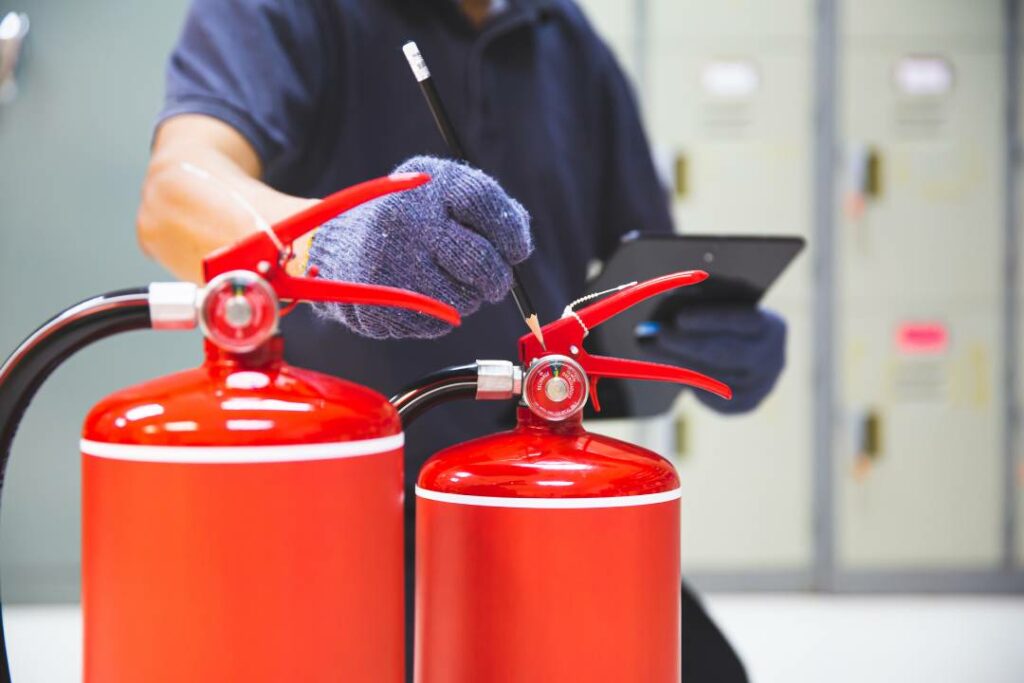
Fires can ignite in an instant, an unpredictable tempest that disrupts lives and environments. Among the most treacherous of these conflagrations are electrical fires, often concealed within the very fabric of our modern existence—wiring, appliances, and circuitry. When faced with such an invisible adversary, choosing the appropriate fire extinguisher becomes paramount. This deliberation opens a discourse on the types, classifications, and methodologies required to combat these fiery foes effectively.
Electrical fires demand a meticulous approach, comparable to wielding a finely-tuned instrument in the hands of an accomplished maestro. Not all extinguishers are equipped to handle this nuanced spectrum of danger. The key lies in understanding the classifications and specifications that dictate suitability.
Understanding Electrical Fire Classifications
Before delving into the intricacies of extinguishers, one must comprehend the classification of fires themselves. Electrical fires fall under Class C, a designation that encompasses fires ignited by live electrical equipment. In broader terms, the delineation between Class A (ordinary combustibles), Class B (flammable liquids), and Class C illustrates why particular extinguishers are ill-suited for electrical confrontations.
Types of Fire Extinguishers for Electrical Fires
To effectively vanquish an electrical blaze, it is imperative to select extinguishers specifically designed for this purpose. The most efficacious options include:
- Carbon Dioxide (CO2) Extinguishers: Renowned for their elegance and efficiency, CO2 extinguishers discharge a non-conductive gas that suffocates flames by displacing oxygen. They leave no residue—making them ideal for sensitive electronic environments. Their sleek design and lightweight nature foster maneuverability, akin to a skilled dancer navigating a complex choreography.
- Dry Chemical Extinguishers (Class BC): Another formidable ally, dry chemical extinguishers combat Class B and C fires through a swift application of a powder that interrupts the chemical reaction of combustion. Typically filled with sodium bicarbonate or potassium bicarbonate, their powdery discharge can be likened to the swift hand of Fate, decisively halting calamity in its tracks.
- Clean Agent Extinguishers: Harnessing the power of agents such as halon or halocarbon, clean agent extinguishers extinguish flames without causing damage to electrical appliances. Their deployment is akin to a soothing balm, providing a protective barrier that envelops and extinguishes fires with finesse. Ideal for use in areas with delicate equipment, they ensure that when disaster strikes, recovery is but a whisper away.
Safety Considerations When Choosing a Fire Extinguisher
As essential as the selection of the correct extinguisher is the adherence to safety protocols. Engaging with electricity, especially during an emergency, can escalate risk levels significantly. To this end, one should consider the following:
- Know Your Environment: Understanding the nature of your workspace, be it a home office or a commercial setting, is critical. Certain locations may proffer unique hazards that require tailored fire safety solutions, transforming a one-size-fits-all approach into an analytical endeavor.
- Regular Maintenance: Like a steadfast sentinel, fire extinguishers must be routinely inspected and maintained, ensuring they function impeccably when called upon. This extends to checking expiration dates, monitoring tank pressures, and inspecting hoses for wear. Investing in these measures is tantamount to bestowing upon oneself peace of mind.
Best Practices for Using a Fire Extinguisher on Electrical Fires
In the event of an electrical fire, knowledge is not merely power; it is the fulcrum upon which the balance of safety pivots. The PASS technique—Pull, Aim, Squeeze, and Sweep—serves as a succinct mantra to remember during crisis.
- Pull: Grasp and pull the pin at the top of the extinguisher, releasing a safety mechanism that allows for operation.
- Aim: Point the nozzle at the base of the flames. This targets the source rather than the flames themselves, inadvertently cascading the inferno into submission.
- Squeeze: With a firm grip, squeeze the handle to release the extinguishing agent. It is crucial to maintain poise; panic can be the most dangerous ingredient.
- Sweep: Using a sweeping motion from side to side, envelop the flames with the agent, working through the conflagration until it is extinguished.
Conclusion: Equip for Efficacy
In conclusion, the selection of an appropriate fire extinguisher for electrical fires is a pivotal endeavor that merits careful consideration. These devices, while deceptively simple, serve as the bulwark against unseen aggressors. With the right strategies and equipment, one can traverse the labyrinthine complexities of electrical fire safety with confidence and authority, transforming an ambiguous threat into a manageable situation. Like the phoenix rising from the ashes, knowledge and preparedness kindle hope in the face of adversity, ensuring that when disaster strikes, one is primed and ready to respond decisively.
